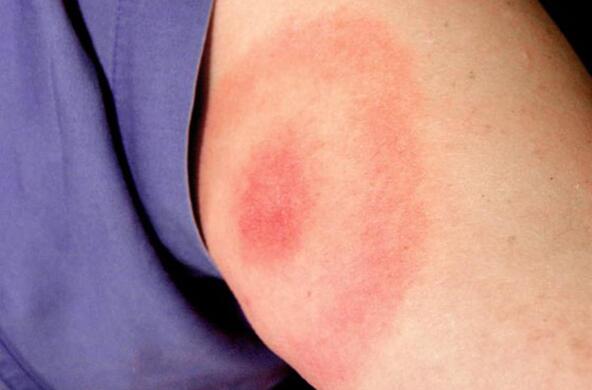Here are a few things you might not know about ticks: One, they’re not insects. They’re closer to the spider in nature, making them arachnids. Also, they don’t fly, hop, jump or fall out of trees. And winter does not kill ticks; while they typically don’t come out when the temperature is below 40 degrees, a January thaw can be enough to get them moving.
Finding out as much as possible about these tiny creatures is the work of Dr. Richard Ostfeld, PhD, a researcher with the Cary Institute of Ecosystem Studies in Millbrook, New York. Dr. Ostfeld has been gathering information about Lyme and other tick-borne diseases for 23 years. “The more we know about risk, the better we’re able to protect ourselves and avoid getting sick in the first place,” he said in a recent interview.
Dr. Ostfeld will share some of his findings with the public at a forum on Lyme disease on Saturday, May 10, from 3 to 5 p.m. at the Spencertown Academy as part of its “Conversations With Neighbors” series. Also appearing is New York Congressman Chris Gibson, who has supported research funding for Lyme and introduced bipartisan legislation to establish a federal Tick-borne Advisory Committee. The event, moderated by Michael Singer, is free and open to the public; reservations are recommended and may be made at www.spencertownacademy.org.
The level of tick infestation—and, thus, Lyme incidence—in our region is “as high as it gets anywhere,” Dr. Ostfeld says. If you want numbers, he has them: About 28 percent of ticks carry Lyme, while 12 percent carry the tick-borne disease known as babesia. About six percent are infected with both, and another eight percent carry a rarer tick-borne disease called anaplasmosis. All three typically begin with a bout of fever and headache, followed by muscle aches, fatigue and multiple other symptoms.
Why so many infected ticks? Dr. Ostfeld believes the problem can be traced back to the suburbanization of our area. The loss of biodiversity as a result of forest fragmentation creates an environment in which the number of larger, predatory mammals is reduced, and the number of small mammals, like mice and shrews, increases. Those little guys—in particular, the white-footed mouse—are the ones who perpetuate the cycle of disease. Infected ticks bite the mice, and the mice pass the infection on to the next generation of ticks who feed off them.
“Ticks will bite any mammal—raccoons, foxes, deer, birds, skunks—but only some of these hosts allow the pathogen to proliferate,” Dr. Ostfeld said. Unlike larger hosts, the mice can’t fight off the disease, he explained. “They’re allocating all their resources to breeding and escaping predators rather than mounting an immune response against an infection.”
So what’s being done to turn the tide? Dr. Ostfeld has promising data on a vaccine for mice and other small mammals, which the Cary Institute has field-tested in the Millbrook area, baiting animals with vaccine-impregnated oatmeal cookies. Over the last four years, the trial has brought the population of infected ticks down from nearly 50 percent to between 10 and 15 percent. A company is now working to license the product, Dr. Ostfeld says.
Human vaccines are also in development in Europe and the United States, which will hopefully have better results than the last one. GlaxoSmithKline marketed the first (and only) human vaccine in the late 1990s, but the company pulled it after a number of class-action lawsuits were filed by people who claimed the vaccine gave them arthritis. It didn’t help that the vaccine only worked about 60 to 70 percent of the time, which is low compared to the efficacy of most American vaccines, Dr. Ostfeld says. A new version will likely be available in the next few years.
What can we do to protect ourselves in the meantime? For one thing, check yourself for ticks as soon as you come in from brushy or wooded areas. Right now, the bigger ticks are out (the ones left over from fall) but, in late May and June, the miniscule nymphs are born, which are much harder to see and feel.
“Super cold snaps like we had with the polar vortex this past year does kill more ticks than would normally die, but it’s not a massive die-off,” Dr. Ostfeld says. “We’ll be monitoring [the population] this summer to see the impact this cold winter had.” His team is also looking at the greater impact of climate change on ticks and tick-borne diseases; he says warming temperatures have caused ticks to move north into the Adirondacks and Catskills and allows them to come out earlier every year.
For now, using repellents, Dr. Ostfeld says, is the most effective prevention method. You can use a DEET-based repellent (insecticides do work on ticks) or a permethrin product; some companies sell clothes inundated with permethrin. Because ticks stay on the ground or on low vegetation, it’s very important to use repellent on your shoes and socks, Dr. Ostfeld says. “Your first line of defense is your feet and ankles.”








